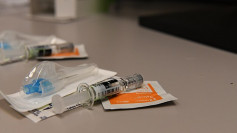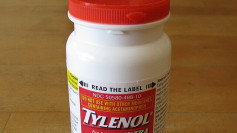A recent study has revealed alarming levels of lead and cadmium contamination in dark chocolate products, posing potential health risks, especially to vulnerable groups such as children and pregnant women. The study, published in the journal Frontiers in Nutrition, analyzed 72 consumer cocoa products over an eight-year period and found that a significant portion of these products contained dangerous levels of these toxic metals.
Lead and cadmium, both neurotoxic metals linked to cancer, chronic diseases, and developmental issues, are naturally present in the Earth's crust and can contaminate crops grown in certain soils. The study found that 43% of the tested chocolate products exceeded California's Proposition 65 maximum allowable dose level for lead, and 35% exceeded the limit for cadmium. Surprisingly, organic dark chocolate, often perceived as healthier, had some of the highest contamination levels.
Jane Houlihan, national director of science and health for Healthy Babies Bright Futures, pointed out that the levels of lead and cadmium found in the chocolate products were comparable to those the U.S. Food and Drug Administration (FDA) identifies in the most contaminated foods. "If typical health risks from eating chocolate fall below the federal government's official safe thresholds, it is because people normally eat fairly small amounts," Houlihan said. However, she warned of heightened risks for regular consumers of dark chocolate, young children, and pregnant women.
The National Confectioners Association, representing the chocolate industry, responded by stating that "chocolate and cocoa are safe to eat and can be enjoyed as treats as they have been for centuries," emphasizing their commitment to food safety and product quality.
The study also highlighted the absence of significant arsenic levels in the tested products, providing some relief amidst the concerning findings on lead and cadmium. The research was conducted by Consumer Labs, a nonprofit that performs third-party testing on health and nutrition products, and involved sending samples to various laboratories to ensure accuracy.
California's Proposition 65 sets a stricter safety standard for lead in chocolate, at 0.05 parts per million, compared to the FDA's 0.1 parts per million limit for children's candy. Danielle Fugere, president and chief counsel for As You Sow, emphasized the importance of these protective levels, allowing consumers to make informed choices about their chocolate consumption. "There are many sources of lead, for example: There's lead in water, there's lead in vegetables and fruits, there's lead in our soil, dust, and air," Fugere said. "Do I feel good about eating a piece of chocolate that may also contain lead? Each person can make their own decision."
Leigh Frame, the study's senior author and executive director of the Office of Integrative Medicine and Health at George Washington University, noted that healthy adults consuming small amounts of dark chocolate occasionally should not be overly concerned. "A typical serving of dark chocolate is 1 ounce, so eating 1 ounce every day or so is a pretty small risk in the grand scheme of things," Frame said. However, she cautioned that the risk increases for those with existing health conditions, pregnant women, and young children.
Tewodros Godebo, an assistant professor of environmental geochemistry at Tulane University, echoed these concerns, particularly for sensitive individuals and children. He pointed out that children can absorb a higher percentage of ingested lead, leading to more severe health impacts. The World Health Organization (WHO) states that there is no safe level of lead exposure for children, as it can adversely affect brain development, resulting in reduced IQ and behavioral changes.
While it is challenging to avoid heavy metals entirely due to their presence in soil, water, and air, experts advise moderation in consuming dark chocolate and other foods known to contain these contaminants. For healthy adults, occasional consumption of dark chocolate remains relatively safe, but awareness and caution are essential, especially for those at higher risk of adverse effects.






